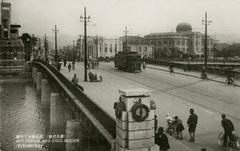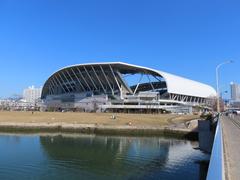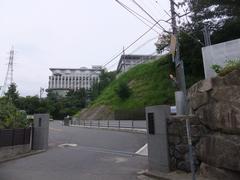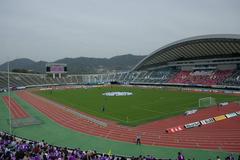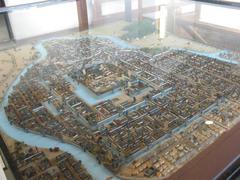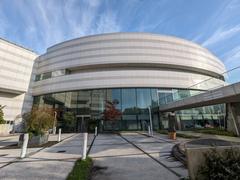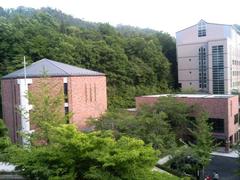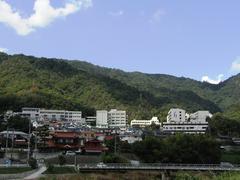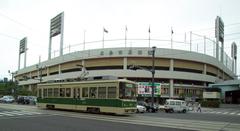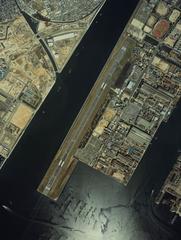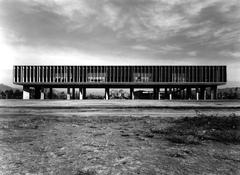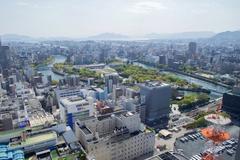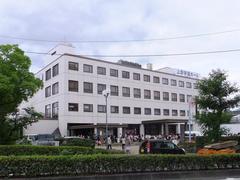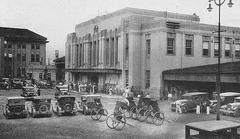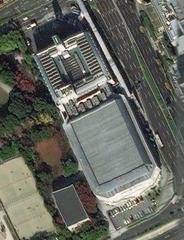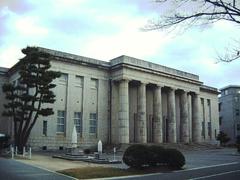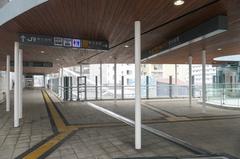Hiroshima Peace Memorial: Visiting Hours, Tickets, and Historical Sites Guide
Date: 03/07/2025
Introduction
The Hiroshima Peace Memorial, widely known as the Genbaku Dome or Atomic Bomb Dome, is one of the world’s most significant symbols of peace and resilience. Situated at the heart of Hiroshima, Japan, this UNESCO World Heritage Site serves as a solemn reminder of the catastrophic events of August 6, 1945, when the first atomic bomb used in warfare devastated the city. Today, the Dome and the surrounding Hiroshima Peace Memorial Park are focal points for remembrance, education, and advocacy for nuclear disarmament, drawing millions of visitors each year (UNESCO; Wikipedia; City of Hiroshima Official Site).
This guide offers a comprehensive overview of the Hiroshima Peace Memorial, including its history, significance, practical visiting information, accessibility, tips for a meaningful visit, and nearby attractions within Hiroshima’s rich historical landscape.
Historical Background: From Industrial Hall to Symbol of Peace
Early History and Construction
The building that would become the Hiroshima Peace Memorial was originally constructed in 1915 as the Hiroshima Prefectural Industrial Promotion Hall. Designed by Czech architect Jan Letzel, it embodied Hiroshima’s aspirations for modernization and economic growth during the early 20th century, featuring a distinctive copper dome and European Art Nouveau design (kanpai-japan.com).
Hiroshima’s Strategic Role Pre-1945
By the 1930s and 1940s, Hiroshima had become a significant military and industrial hub, hosting the Second General Army headquarters and numerous factories supporting Japan’s war effort. This strategic importance made Hiroshima a primary target for Allied forces during World War II (Hiroshima Prefecture).
The Atomic Bombing: August 6, 1945
At 8:15 a.m. on August 6, 1945, the U.S. B-29 bomber Enola Gay released the atomic bomb “Little Boy” over central Hiroshima. Detonating approximately 600 meters above ground and just 160 meters from the Industrial Promotion Hall, the bomb unleashed devastating heat and blast waves, instantly obliterating much of the city. An estimated 140,000 people perished by the end of 1945 due to the immediate and lingering effects of the bombing. Remarkably, the Hall’s steel and concrete frame survived, becoming the iconic skeletal structure now preserved as the Genbaku Dome (Dive! Hiroshima; Wikipedia).
Preservation and Global Significance
Postwar Preservation
After the war, debates ensued about whether to demolish the ruined Dome or preserve it. In 1966, Hiroshima city officials resolved to maintain the structure as a memorial, reinforcing it through several preservation projects to withstand time and natural disasters.
UNESCO World Heritage Status
In 1996, the Genbaku Dome was designated a UNESCO World Heritage Site, recognized for its enduring message of peace and as a testament to the destructive power of nuclear weapons (UNESCO). The Dome stands as the only building near the bomb’s hypocenter still standing, making it a powerful symbol of both destruction and hope.
Visiting the Hiroshima Peace Memorial: Essential Information
Location and Access
- Address: 1-1-10 Ote-machi, Naka-ku, Hiroshima
- Access: Easily reached via Hiroshima Electric Railway (tram) to Genbaku Dome-mae Station (1-minute walk), city buses from JR Hiroshima Station, and proximity to Hiroshima Bus Center (Japan Travel Note; Dive! Hiroshima).
- Pedestrian-Friendly: The park and surrounding area are easily navigable on foot and wheelchair accessible.
Opening Hours and Admission
- Atomic Bomb Dome: The Dome itself is viewed from outside a perimeter fence and is accessible 24/7, year-round, free of charge (Cestee).
- Hiroshima Peace Memorial Park: Open year-round, free admission.
- Hiroshima Peace Memorial Museum:
- Open daily except December 30–31.
- April–September: 8:30 a.m. – 6:00 p.m. (extended to 7:00 p.m. in August)
- October–March: 8:30 a.m. – 5:00 p.m.
- Last admission: 30 minutes before closing (Japan Travel Note)
- Tickets: Adults ¥200, high school students ¥100, children (junior high and younger) free. Tickets are available onsite and online (official website).
Visitor Experience and Practical Tips
Museum and Park Highlights
- Hiroshima Peace Memorial Museum: Features extensive exhibits, artifacts, survivor testimonies, and multimedia resources documenting the bombing, aftermath, and global impact (Japan Travel Note).
- Audio Guides: Available in multiple languages for a small fee; Japanese version narrated by Sayuri Yoshinaga.
- Accessibility: The entire park and museum are wheelchair accessible, with ramps, elevators, tactile maps, and braille signage. Wheelchairs are available for loan at the museum entrance (Japan Travel Note).
- Facilities: Public restrooms, coin lockers, café, souvenir shop, and free Wi-Fi are available throughout the park.
Park Etiquette
- Respectful Conduct: Maintain a quiet and reflective demeanor, especially near memorials and inside the museum.
- Photography: Permitted except in designated areas; be respectful of others, particularly those in mourning or silent reflection (Flashpacking Japan).
- Cultural Gestures: Visitors are encouraged to fold and leave origami cranes at the Children’s Peace Monument as a symbol of peace.
Best Times to Visit
- Spring (cherry blossoms) and Autumn (fall foliage): Most scenic and pleasant weather, but also busiest.
- August 6 (Peace Memorial Ceremony): Commemorative events mark the anniversary of the bombing, attracting large crowds (Itinerary Expert). Plan ahead if attending.
Key Monuments and Sites Within the Peace Memorial Park
- Atomic Bomb Dome (Genbaku Dome): The preserved skeletal remains of the original Industrial Promotion Hall.
- Cenotaph for the Atomic Bomb Victims: Memorial arch holding the names of all known victims.
- Children’s Peace Monument: Inspired by Sadako Sasaki, surrounded by thousands of origami cranes.
- Peace Bell: Visitors may ring the bell as a prayer for peace.
- Flame of Peace: Symbolically burning until all nuclear weapons are abolished.
- Honkawa Elementary School Peace Museum: Preserved classroom and exhibits on the bombing’s impact on children (Dive! Hiroshima).
- Hiroshima National Peace Memorial Hall for the Atomic Bomb Victims: A contemplative space with survivor testimonies and a panoramic photo mosaic commemorating victims (Nerd Nomads).
Nearby Historical and Cultural Attractions
- Hiroshima Castle: Reconstructed after the war, with exhibits on samurai history.
- Shukkeien Garden: Traditional Japanese garden ideal for peaceful reflection.
- Miyajima Island: Famous for Itsukushima Shrine and scenic views, accessible via ferry (Japan Travel Explorer).
Accessibility and Facilities
The Hiroshima Peace Memorial Park is designed for universal accessibility, with:
- Smooth walkways and ramps for wheelchairs and strollers.
- Accessible restrooms and elevators in the museum.
- Tactile maps and braille signage.
- Multilingual staff and informational materials (Japan Travel Note).
Guided Tours and Educational Resources
- Guided Tours: Available in English and Japanese through the museum and local volunteer organizations. Advance booking recommended for groups (Hiroshima Peace Memorial Museum).
- Educational Resources: Digital exhibits, survivor testimonies, and interactive displays accessible on-site and online.
- Audio Guides: Enhance understanding with detailed explanations in multiple languages.
Annual Events
Peace Memorial Ceremony (August 6): Features a moment of silence, speeches, and dove releases to honor victims and promote peace (Itinerary Expert). Expect large crowds; arrive early for a good vantage point.
Practical Tips for Visitors
- Dress modestly out of respect for the solemnity of the site.
- Avoid eating, drinking, or smoking in memorial zones.
- Pets are not allowed, except service animals.
- Take time for quiet reflection and consider the global significance of the site.
- Visit early or late in the day to avoid crowds, especially during peak seasons.
Frequently Asked Questions (FAQ)
Q: What are the visiting hours for the Hiroshima Peace Memorial?
A: The Atomic Bomb Dome is viewable 24/7 from outside; the museum is open daily except December 30–31, with varying hours depending on the season.
Q: How much do museum tickets cost?
A: Adults: ¥200, high school students: ¥100, children (junior high and younger): free.
Q: Is the site wheelchair accessible?
A: Yes, both the park and museum are fully accessible to visitors with disabilities.
Q: Are guided tours available?
A: Yes, through the museum and local organizations; booking in advance is advised.
Q: Can I take photographs?
A: Yes, except in certain museum areas. Please be respectful of other visitors.
Q: When is the best time to visit for cherry blossoms or fall colors?
A: Late March to early April for cherry blossoms; November for autumn foliage.
Summary and Recommendations
Visiting the Hiroshima Peace Memorial and its surrounding historical sites offers a powerful, transformative experience. The Genbaku Dome stands as an enduring monument to the horrors of war and the unyielding hope for peace. With its accessible facilities, comprehensive museum exhibits, and tranquil park setting, the site welcomes visitors of all backgrounds to reflect, learn, and participate in the global call for a world free of nuclear weapons.
To make the most of your visit:
- Purchase museum tickets online in advance.
- Plan your trip during spring or autumn for the best weather and scenery.
- Consider guided tours or audio guides for deeper understanding.
- Explore nearby cultural sites to enrich your Hiroshima experience.
- Download the Audiala app for audio tours and up-to-date visitor information.
For further details and the latest updates, consult the official museum and tourism websites listed below.
Sources and Further Reading
- This article draws on information from the following sources, which provide additional details and visitor resources:
- Hiroshima Peace Memorial (Wikipedia)
- Exploring the Genbaku Dome (Kanpai Japan)
- Hiroshima Prefecture Reconstruction and Atomic Bombing History (Hiroshima Prefecture Official Site)
- Hiroshima Peace Memorial Museum (Official Website)
- UNESCO World Heritage Listing for Hiroshima Peace Memorial
- City of Hiroshima Official Atomic Bomb Peace Site
- Dive! Hiroshima
- Japan Travel Note
- Cestee
- Itinerary Expert
- Flashpacking Japan
- Nerd Nomads
- Japan Travel Explorer
- Travel + Leisure Asia
- Travel Setu
- Visit Japan Vegetarian
